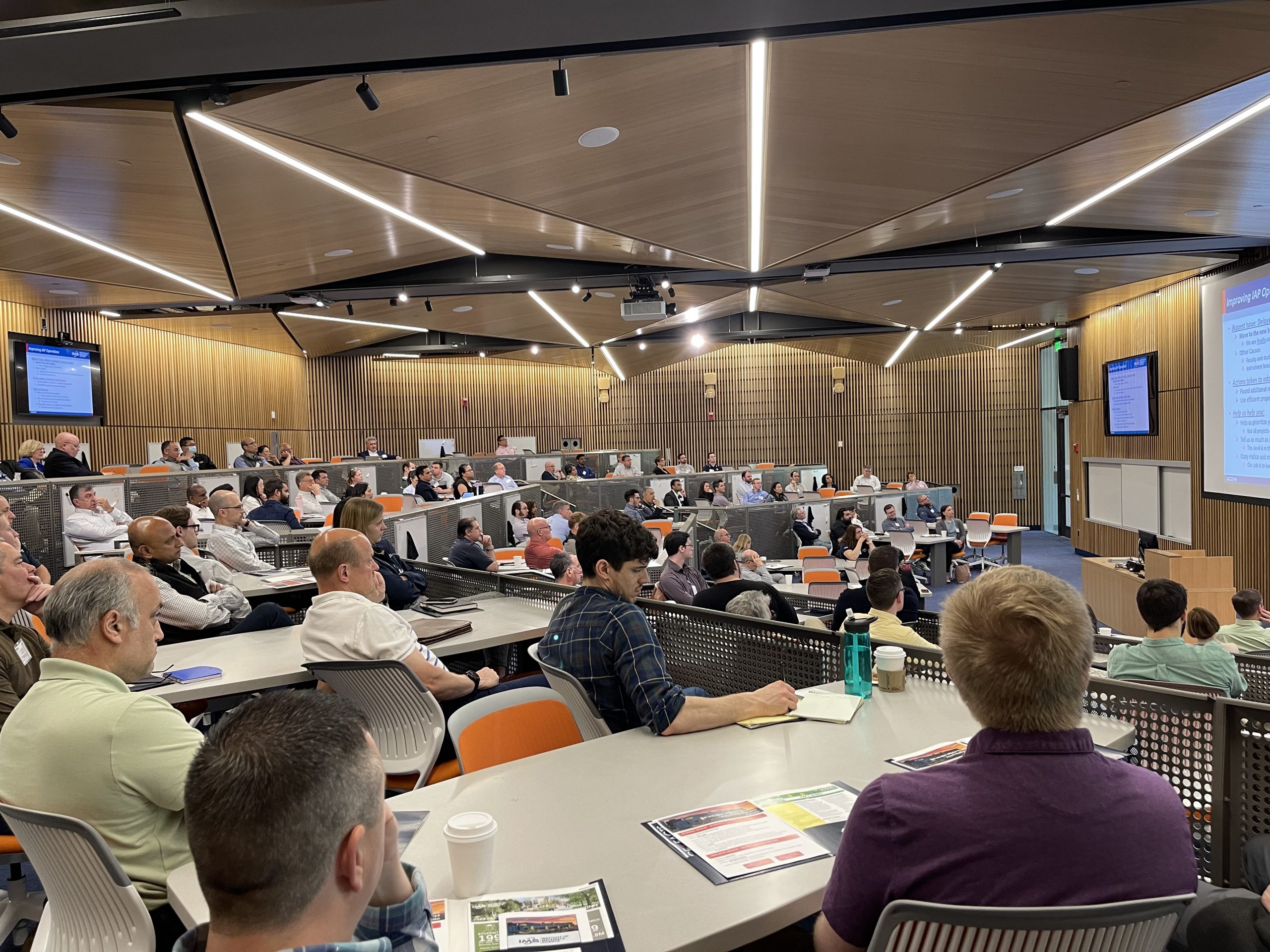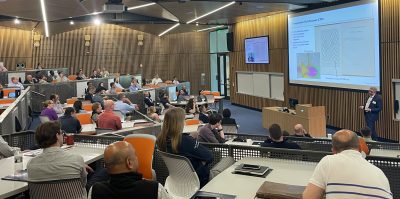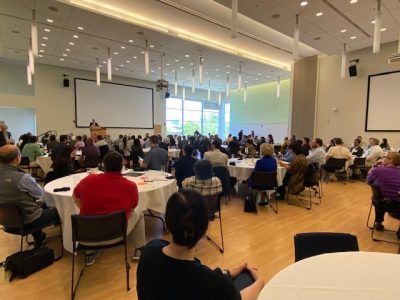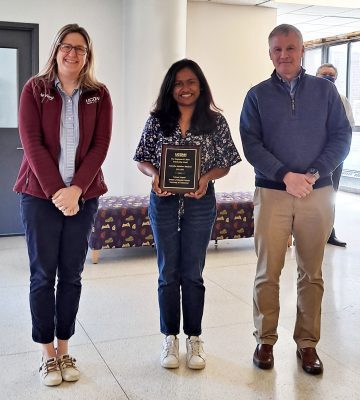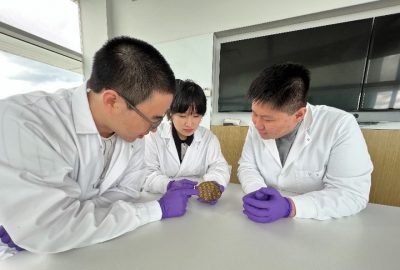by Paige Bjerke
IMS Written Communications Assistant
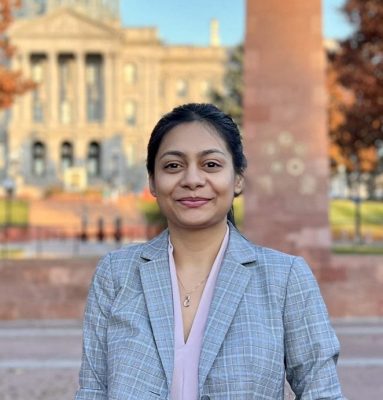
Ayana Ghosh received her Ph.D. in Materials Science and Engineering from the University of Connecticut in 2020, where she conducted a variety of research projects in the lab group of her advisor, Professor Serge Nakhmanson. After earning her doctorate degree, she joined the prestigious Oak Ridge National Laboratory (ORNL) of the U.S. Department of Energy as a postdoctoral research associate. In 2023, she moved into a full-time position as a staff scientist. In this role, Ghosh has excelled in her research, having won copious awards, spoken at conferences around the world, and gotten published in multiple peer-reviewed journals.
IMS News reached out to Ghosh with five questions about her current position, her many achievements, and her plans for the future.
***
You have clearly set yourself apart at Oak Ridge, having won various awards in just a few years. What skills do you feel propelled you to such impressive success, and what support systems, either within your research team or elsewhere, have helped you the most, and how?
Success in research is often non-linear. It involves many days when things don’t work out or…challenges I don’t fully understand. However, I’ve learned that the key to progress is being able to formulate a clear and meaningful scientific problem and then break it down into manageable parts. This helps me maintain a steady pace toward achieving the final goal. I believe that embracing new ideas and constantly learning—despite the challenges—are key drivers of growth and innovation. Above all, consistency, determination, and resilience have been essential to my success. Giving my best effort, even in the face of setbacks, has played a key role in driving my progress.
The support of my mentors during my postdoctoral work (September 2020 to February 2023), ongoing encouragement from my group leader at ORNL, along with the valuable feedback, collaboration, and shared knowledge from my colleagues and collaborators at ORNL and across the globe, have been instrumental in navigating challenges and advancing my work. I continue to stay in touch with my graduate school advisors and faculty, whose guidance remains invaluable in shaping my research journey.
I would like to express my deep gratitude to my mother, whose unwavering support has been a constant source of strength throughout my journey. After the sudden passing of my father during the pandemic in 2021, I faced the challenge of navigating both personal loss and the demands of my academic work. Her courage has been an anchor, helping me to persevere through difficult times and stay focused on my goals.
Working for ORNL, part of the U.S. Department of Energy, how do you grapple with the importance and scale of your work, which undoubtedly shapes government policy and affects the wellbeing of America and the world at large?
The motivation behind my work has always been the desire to address real-world problems, with the hope to contribute to technological advancements and innovations that improve people’s lives. Working at a U.S. Department of Energy lab, I recognize that my work certainly carries significant weight, particularly knowing that it can influence government policy and ultimately affect the wellbeing of individuals not just in America, but globally. I try to focus on the positive change I hope to drive rather than feel overwhelmed by the scale of it.
I’m also constantly supported by a network of colleagues, mentors, and collaborators who keep me grounded. One of the coolest things about being part of a national lab is the opportunity to casually interact with brilliant minds from various fields. Imagine this: taking an afternoon walk around the building where you might bump into a computer scientist, mathematician, or physicist, and get to chat about the problems you’re working on, gaining fresh perspectives and ideas. It’s amazing how these conversations can spark new ways of thinking, often leading to creative solutions. I also remind myself that progress is often incremental—every small step adds up to a bigger picture. Balancing the scale of my work comes from staying connected to the people and principles that matter most and keeping my focus on the long-term goals.
In 2021, you stated that you “hope to better understand the nuances of experimental research as combined with the particulars of theoretical and simulated data.” Have you been able to gain that understanding at this point in your career? If so, to what extent and how does that understanding inform your current work? If not, what do you feel are the barriers to achieving that understanding?
This is still an ongoing process. Much of my postdoctoral and current work has been dedicated to understanding the nuances between experimental research and theoretical/simulated data. We have made significant strides, particularly in autonomous microscopy, developing machine learning workflows to enhance our understanding of experimental data and integrate it with theoretical simulations.
However, challenges remain, particularly around the disparities between time and length scales. Real-time experiments often don’t align perfectly with theoretical approximations. These gaps require more adaptive approaches. I believe addressing these grand challenges will be crucial not only for my work, but also for improving the synergy between experimental and computational methods. This synergy is essential for unlocking new insights and driving innovation in the world of materials and beyond.
Your Ph.D. thesis was based heavily on machine learning, which you still employ frequently in your work at ORNL. What should current students in the field of materials science know about machine learning and AI, and how would that knowledge benefit them?
For graduate students in materials science, getting comfortable with the basics of ML and AI is crucial. Start by understanding the algorithms, their implementation, and how to apply them to real-world problems. The key is knowing when and how to use these tools, based on solid domain expertise. It’s not just about using fancy algorithms or architectures, it’s about identifying the problems in materials science that can benefit from them. Beyond just applications, there’s also a big opportunity for students to get involved in method development to push the boundaries of what’s possible.
On a broader note, AI is shaking up every field – it’s changing how we teach and learn, too. With AI-assisted teaching, personalized learning, and a wealth of accessible tools, I think we’re on the brink of a classroom revolution. It’s an exciting time. I imagine embracing these changes will only make us all better researchers and learners. So, for students, one piece of advice, don’t just sit back – dive in and start experimenting (in the lab and on the computer)!
With so much recognition already, and new projects going on constantly, what are your goals or specific things you want to achieve over the next 10 years?
Looking ahead, I am committed to pushing the boundaries of my field by advancing technological solutions that tackle some of the world’s most pressing challenges in energy, AI, and quantum technologies. I am particularly excited about the potential of deepening our understanding of the foundational principles of materials physics and bridging theory with real-world experiments. This integration will be crucial in developing practical, scalable solutions that address the evolving challenges in both society and technology.
With an eye on what’s next, my goal is to take on more leadership roles, collaborating with a diverse range of experts across disciplines to drive innovation and create meaningful change. Equally important is my commitment to mentoring young researchers and contributing to the development of the next generation of scientists. At the same time, I recognize the importance of balancing career advancement with maintaining personal well-being, ensuring both professional growth and personal fulfillment.
***
IMS News thanks Dr. Ghosh for taking the time to answer our questions and providing such potent insight into her work. We wish her all the best as she continues her exciting and innovative career journey.
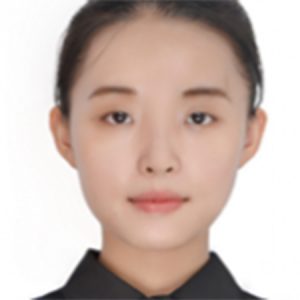

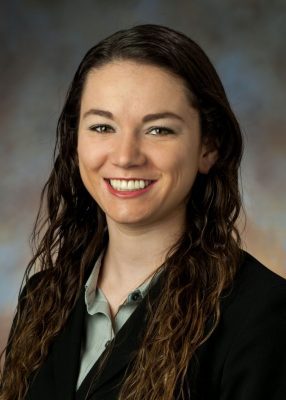 Kerry Lynn Davis-Amendola beautifully shares her experience as a current Ph.D. student in the
Kerry Lynn Davis-Amendola beautifully shares her experience as a current Ph.D. student in the 